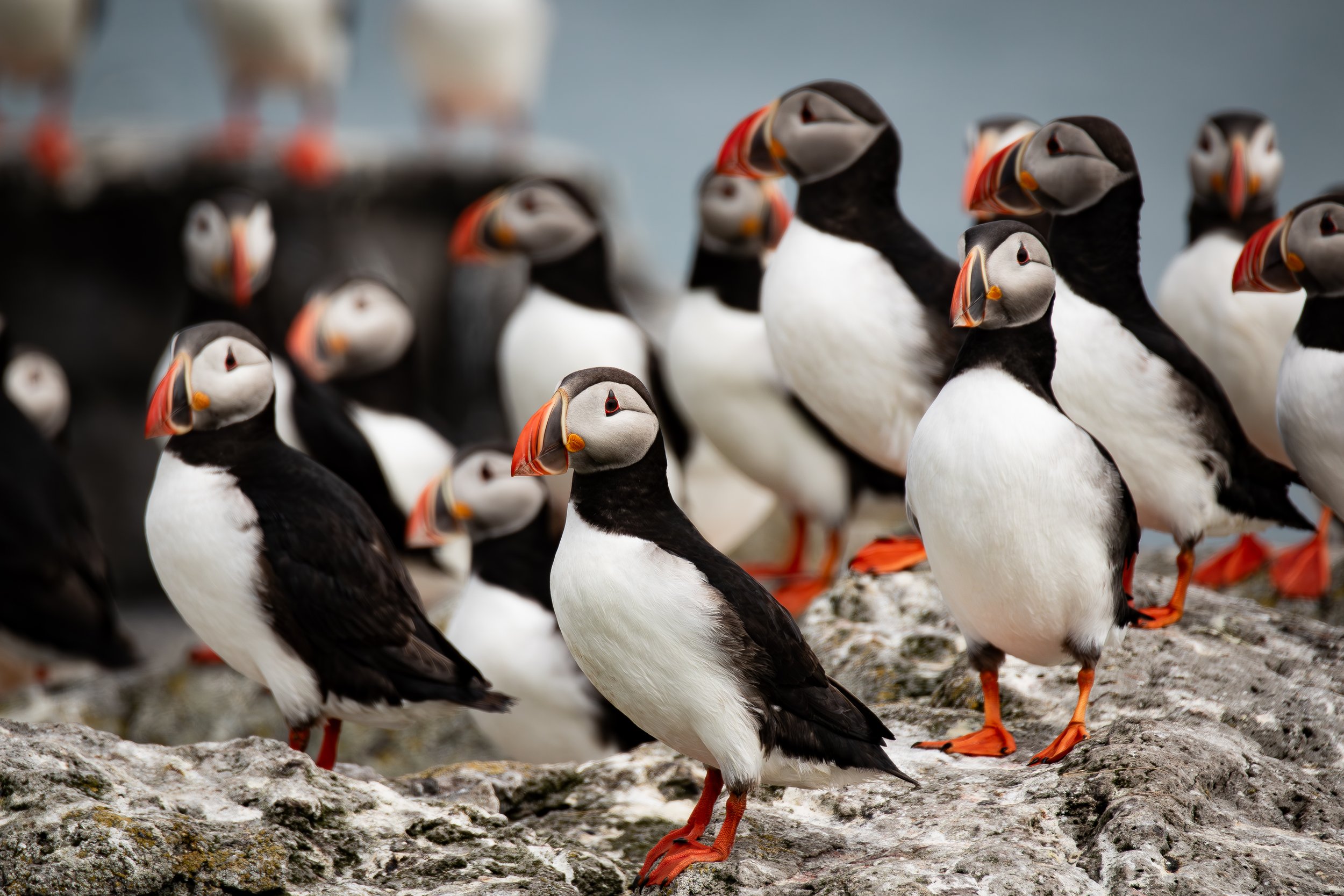
The Land of Fire and Ice
I have been guiding multi-day expeditions around Iceland since 2021. As a photographer that focuses on wildlife, this country of fire and ice has presented an interesting challenge… there aren’t many animals to be found! Instead, I’ve been captivated by the abundance of spectacular landscapes, full of colours, textures, and vivid life. It’s easy to be inspired by this beauty when you’re standing in awe of Iceland’s waterfalls, glaciers and glacial lagoons, volcanic craters, black sand beaches, winding fjords and ancient lava fields. Immerse yourself in this collection of wild spaces and resilient wildlife that I’ve been fortunate enough to explore throughout the Icelandic summer and fall.
Icelandic Landscapes
Atlantic Puffins
Iceland is a vital breeding ground for the Atlantic puffin, hosting around 60% of the global population. Each spring, an estimated 8 to 10 million puffins arrive in Iceland, typically between late April and early May, to breed in grassy cliffside burrows. These seabirds are monogamous, returning to the same partner and nest site year after year. They lay a single egg, which both parents care for until it is ready to fledge. Puffins are exceptional divers, using their wings to "fly" underwater in search of small fish like herring and sand eels, which they can hold in their specialized beaks that accommodate multiple fish at once. Though clumsy on land, puffins are skilled flyers, reaching speeds of up to 55 mph. They spend most of their lives at sea, returning to land only for the breeding season. However, Iceland's puffin population faces growing threats from climate change, which disrupts food availability, along with habitat loss and hunting, making conservation efforts increasingly important.
Puffin Patrol & Puffin Rescue Center
Each year, from late August to September, thousands of young puffins, or pufflings, leave their burrows for the first time, attempting to fly out to sea. In the Westman Islands, however, many become disoriented by the bright artificial lights of the town of Heimaey, causing them to crash-land on streets, gardens, and rooftops. These pufflings are vulnerable to predators, traffic, and other dangers. To address this, the Puffin Patrol was established, engaging the local community and tourists in a hands-on conservation effort. Volunteers roam the streets at night with flashlights and cardboard boxes, carefully gathering stranded pufflings. The next morning, the birds are released at the cliffs, giving them a second chance to reach the ocean safely. The Puffin Rescue Center complements this program by offering care to any pufflings that are injured or malnourished, providing food and medical attention as needed before release. Each year, between 3,000 and 10,000 pufflings are rescued by local residents and volunteers. Since the program’s inception in the late 1970s, over 150,000 pufflings have been saved, with the combined efforts of the community and the rescue center significantly boosting puffin survival rates in the region.
Humpback Whales
Though whale watching occurs around the globe, here in the West Fjords, it is an incredibly unique and fairly private event. Typically, only one boat in the whole region of Ísafjörður sets out searching for these phenomenal sea creatures. In this intimate setting, whales delight spectators by showcasing an array of behaviours from breaching, to fin slapping and displaying their flukes before a deep dive. Whenever sightings occur, you can bet that cameras are clicking away, but did you know that those photographs can be used to bolster whale conservation? Through a website called HappyWhale, anybody can upload photos of whale flukes, whether you’re a pro or just shooting with your phone. The pictures then get analyzed using image processing algorithms and matched with whale photos from scientific collections and other photographs. This has made global whale tracking of humpback whales possible, allowing us to learn more about their migration routes, population estimates, injuries, habitat site-fidelity and much more! HappyWhale has created a global humpback whale catalog containing photos from all encounters. It is a fantastic example of how anybody with a camera can contribute to conservation initiatives. On top of that, HappyWhale will alert you when the whale you photographed has been spotted elsewhere!
































































































